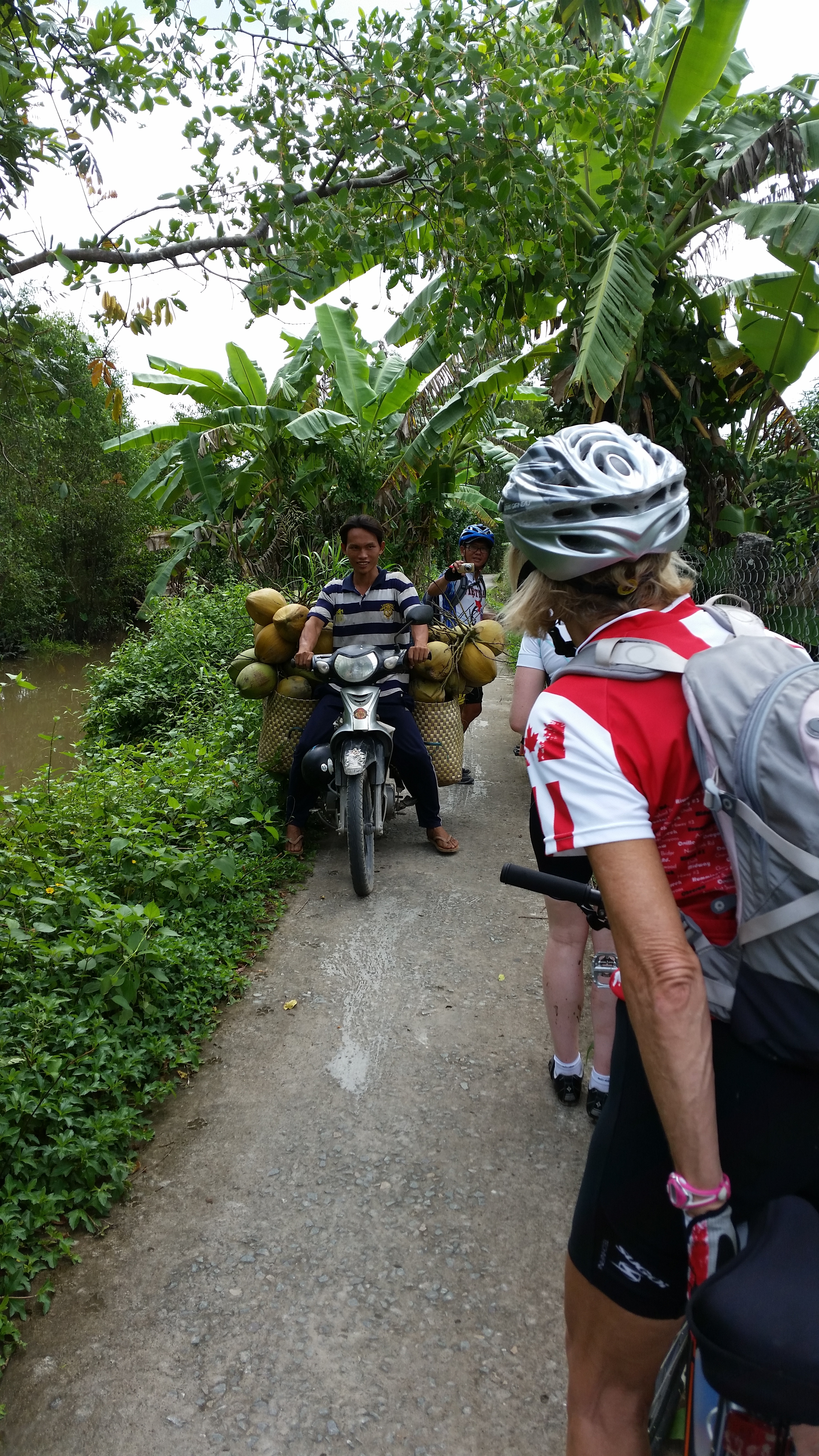After a day resting by the hotel pool, today we returned to the adventure theme. A bus picked us up at 7:15 and took us to get fitted with harness and helmet. For the next 3 hours, we traversed 10 ziplines through the Angkor park. The gear was all top-notch and the entire enterprise as… Continue reading Flying with the Gibbons
Category: Asia
All countries I’ve visited in Asia
Angkor
We finished our tour with a ride into the ancient city to visit three major complexes. The first, and most famous, was Angkor Wat, which, aside from the tourists, was as beautiful as it’s known to be. Our guide, who was a uniformed official, explained that it was built on volcanic rock for stability, but… Continue reading Angkor
Red Dust
Cambodia hass definitely been hotter than Vietnam, though that may be because we’ve been on open roads. Long dusty, bumby stretches leave us coated in red and dry of throat. As in Vietnam, people call out ‘hello’ as we ride by, chilren running to wave or touch the foreigner’s hands. They spend their days in… Continue reading Red Dust
Temple Blessing
The road between Phnom Penh and Siem Reap is always under construction. Apparently the government uses it as a way to get funding from other countries, but most funds go into official’s pockets. The materials used are poor, so by the time the road is finished, work must start again. This meant that we could… Continue reading Temple Blessing
Atrocity Tour
No cycling today since we had to cross the border from Vietnam to Cambodia, a journey that took 4 hours by speedboat. We had to disembark at two separate ports for customs out of Vietnam and in to Cambodia respectively. Our new guide, Polo, met us in Phnom Penh and took us on an atrocity… Continue reading Atrocity Tour
Killing Fields
Day 5 was the hardest so far, despite the shorter distance. Most of the 45km until lunch was in full sun, and the breeze from riding barely held the heat at bay. Quang made sure we stopped every 10km to hydrate with water, tea, coconut or sugarcane juice. We were all glad to get into… Continue reading Killing Fields
Floating Market
Day 3
Too tired today to think about writing, but I’ve managed to embed maps of the day’s trip. My navigator only lasted 7 hours so I had to capture the last stage while it was attached to a charger, which means a separate recording.
Pig Ahoy
Ferries replaced bridges today as the estuaries widened. Paths angle steeply into the water, and the ferries drove their fixed ramps over the paths so we could ride straight on. The terrain opened up to reveal coconut plantations with irrigation channels cut through the earth, then opened up more for rice fields. We spent more… Continue reading Pig Ahoy
The Villagers’ Path
We spend the day riding along a concrete path beside a river, and frequently on bridges over estuaries. Jackfruit and coconut palms line each side of the road, and an occasional house meanders by, all open to the breeze and the wealthy ones tiled. Shops come right to the path, some extending a shelter overhead… Continue reading The Villagers’ Path

